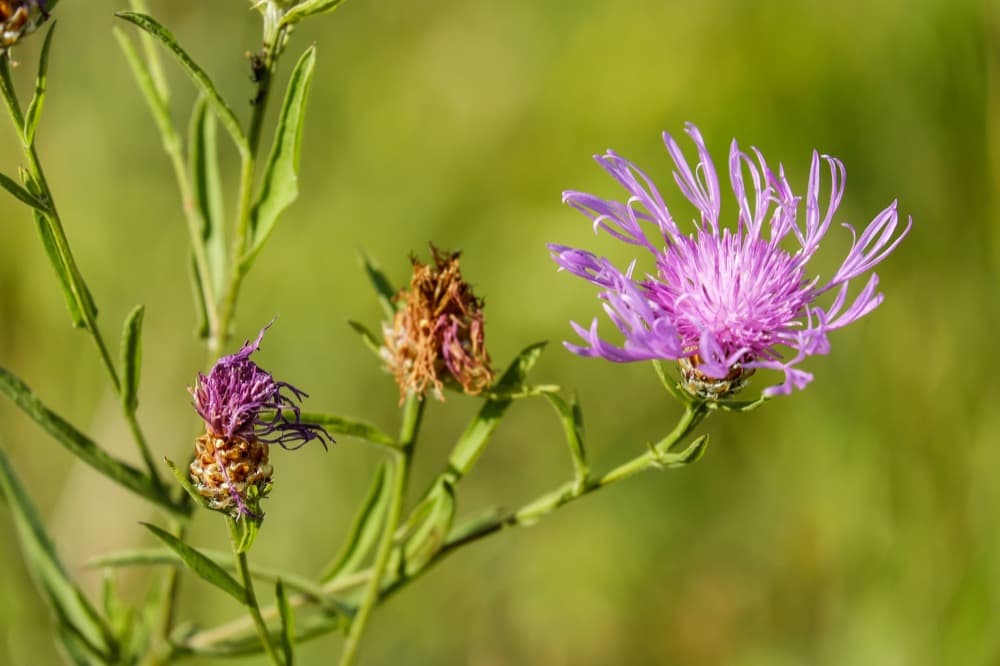My dog really likes to eat grass, probably for the fiber. I assume some of your children are just as wild. This worried me because I assumed that Denver liberally drenched its parks in crazy herbicides and pesticides.
I was wrong! But there's still reason for caution, especially this time of year.

My big question was this: What kinds of substances does Denver apply to its parks, when, where, how often and why?
How they do it:
The city's crews don't "broadcast" pesticides or herbicides, as city naturalist Kelly Uhing told me. In other words, they don't spray stuff willy-nilly.
Instead, they spot specific weeds and other threats, apply the appropriate substance and then mark the spot with a little yellow flag. The flags always include the word "pesticides," but they are used for herbicides and other materials too.
"We do not broadcast spray any parks just to spray," parks spokesperson Cyndi Karvaski wrote in an email.
What they use:
It depends on the plant.
One of the most common groups of enemies includes thistles and knapweed. Uhing's team uses the herbicides Transline and Milestone, among others, against these types of plants. They do not use 2,4-D, which may be a carcinogen.

Another major category is cheatgrass, an invasive and sneaky little organism. Cheatgrass is much harder to deal with and tends to spread to broader areas. The city's crews use more "all-purpose" herbicides such as Roundup to control cheatgrass, but they still do so on a spot basis.
Are these substances a danger?
These herbicides don't pose much of a threat to human or animal health, Uhing says. The department aims for products with a very high LD-50, meaning it takes a lot to kill test animals. (For Roundup, it might be a few ounces for a 40-pound dog, but those ounces are spread across a lot of plants.)
That being said, dogs eat crazy amounts of dumb stuff, and it's obviously not good to eat stuff that kills stuff. You should generally keep your animals and children away from those little yellow flags, and you might even keep them out of the natural-style vegetation areas in general. Besides the danger of eating treated plants, your dog or child might spread herbicides to places where they're not wanted.
Also: Denver does not go as far as some cities. Boulder, for example, has designated certain parks as organic, staying completely away from synthetic fertilizers and pest controls. There's some debate over whether that's an effective approach to public lands.
Why are we trying to kill these plants?
Colorado law requires landowners to eliminate noxious weeds. These plants are "non-native, invasive, aggressive," and are likely to kill off local vegetation. They arrive in a number of ways, including by hitching a ride on vehicles, via rivers and wind or on people and animals.
Why you should expect more yellow flags in the months ahead:
"Fall is an excellent time to apply herbicides, especially to deep-rooted perennials," Uhing says. "They're rapidly storing up carbohydrates in their root systems. They take up that herbicide [snaps fingers] like that."
So, be extra alert until the first snowfall. Springtime is also a prime application period.
What about fertilizers?
Yeah, they might be applied to grassy turf areas sometimes. However, they're generally benign and not harmful once applied, Pet Health Network reports.
Any questions?
I'll happily update this post with new information. Just email me your relevant questions: [email protected], tweet at me, or call me at 303-502-2803.
Also, if you have questions about a specific area, the city recommends calling 311.











